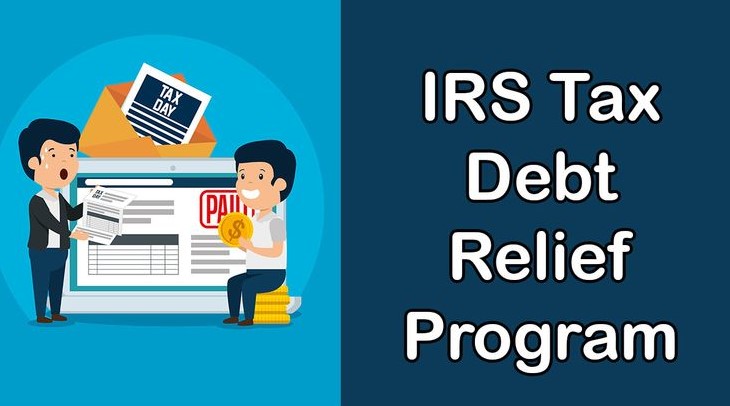IRS Tax Debt Relief Program

The IRS Tax Debt Relief Program stands as a crucial initiative designed to alleviate the financial burden on individuals and businesses struggling with outstanding tax liabilities. In the complex landscape of taxation, unforeseen circumstances or financial hardships can lead to mounting tax debts, creating a daunting situation for taxpayers. Recognizing the need for a compassionate and practical solution, the IRS Tax Debt Relief Program aims to provide eligible taxpayers with viable options to settle their debts, offering a pathway to financial recovery.
This program encompasses a range of solutions, including installment agreements, offer in compromise, and other specialized programs tailored to the unique circumstances of each taxpayer. By facilitating structured repayment plans and exploring potential reductions in the total amount owed, the IRS Tax Debt Relief Program seeks to empower taxpayers to regain control of their financial well-being. As a manifestation of the government’s commitment to fairness and flexibility, this program underscores the importance of fostering a supportive environment for those facing tax challenges, ultimately fostering economic stability and individual financial resilience.
Understanding IRS Tax Debt Relief Program
Understanding the IRS Tax Debt Relief Program involves familiarity with eligibility criteria, relief options, and the application process.
Eligibility Criteria:
Types of Taxpayers Eligible: The IRS Tax Debt Relief Program caters to various types of taxpayers, including individuals, businesses, and self-employed individuals facing tax-related financial challenges.
Qualifying Tax Debts: Taxpayers with a range of eligible debts, such as income taxes, penalties, and interest, may qualify for the program. Understanding the specific criteria for qualifying tax debts is crucial in determining eligibility.
Available Relief Options:
Offer in Compromise: One relief option is the Offer in Compromise, where eligible taxpayers can settle their tax debt for less than the total amount owed. This option requires a thorough financial analysis to determine the taxpayer’s ability to pay.
Installment Agreements: Another avenue is the Installment Agreements, allowing taxpayers to pay their tax debt in manageable monthly installments. This option provides flexibility and considers the taxpayer’s financial capacity.
Currently Not Collectible Status: Taxpayers facing significant financial hardship may qualify for a Currently Not Collectible status, temporarily halting IRS collection efforts due to the individual or business’s inability to pay.
Application Process:
Required Documentation: The application process necessitates the submission of essential documentation, including financial statements, proof of income, and details of assets. Providing accurate and comprehensive information is crucial for a successful application.
Submission and Processing Timelines: Timely submission of the required documents is crucial for initiating the relief process. Once submitted, the IRS undertakes a thorough review, and processing timelines may vary. Understanding the expected duration aids in managing expectations during the application period.
Benefits of IRS Tax Debt Relief Program
The IRS Tax Debt Relief Program offers individuals and businesses a lifeline by providing a range of benefits aimed at alleviating the burden of tax debt. One of the primary advantages is the substantial reduction of total tax liability. Through this program, taxpayers can negotiate with the IRS to arrive at a more manageable and affordable payment plan, helping to ease the financial strain caused by outstanding tax obligations.
Furthermore, participants in the IRS Tax Debt Relief Program stand to benefit from the avoidance of steep penalties and accruing interest on their overdue tax payments. Penalties and interest charges can significantly inflate the original debt amount, exacerbating financial challenges for taxpayers. The relief program aims to alleviate this additional financial burden, providing a pathway for individuals and businesses to regain control over their fiscal responsibilities.
A critical aspect of the program is the protection it affords to assets from potential seizure by the IRS. Without proper resolution, the IRS has the authority to seize assets such as bank accounts, real estate, and other valuables to satisfy outstanding tax debts. The relief program acts as a safeguard, allowing individuals and businesses to protect their assets and maintain a level of financial stability.
The ultimate goal of the IRS Tax Debt Relief Program is the restoration of financial stability for participants. By addressing tax liabilities through negotiated settlements and structured repayment plans, individuals and businesses can work towards regaining control of their financial situations. This aspect of the program provides a holistic approach to resolving tax debt issues, offering participants an opportunity to rebuild their financial standing and move forward with renewed confidence. In essence, the program serves as a crucial tool for those facing IRS tax debt challenges, providing a structured and beneficial pathway to financial recovery.
Considerations and Tips for Taxpayers
The IRS Tax Debt Relief Program offers a lifeline to taxpayers grappling with overwhelming tax liabilities. In navigating this program, taxpayers should consider several key aspects to enhance their chances of successfully resolving their tax debt issues. Seeking professional advice is paramount, as tax laws can be complex and subject to frequent changes. Engaging with tax professionals who specialize in IRS matters can provide invaluable insights into available relief options and help tailor a strategy that aligns with the specific circumstances of the taxpayer.
Exploring alternative solutions is another critical consideration. The IRS offers various relief programs, such as installment agreements, offers in compromise, and penalty abatement, which can significantly alleviate the burden of tax debt. Understanding the eligibility criteria and implications of each option is crucial in making informed decisions about the most suitable approach for resolving one’s tax obligations.
Timely communication with the IRS is emphasized as an essential element in navigating the tax debt relief process. Open and transparent communication can prevent the escalation of issues and may lead to more favorable arrangements. Whether it involves negotiating a manageable payment plan or seeking additional time to settle outstanding amounts, maintaining a proactive line of communication with the IRS is key to finding viable solutions.
Furthermore, taxpayers are encouraged to adopt a proactive approach to long-term financial planning. This involves not only addressing current tax debt but also implementing measures to avoid falling into similar predicaments in the future. Developing sound financial habits, staying informed about tax regulations, and adjusting one’s financial strategies can contribute to a more stable financial future and reduce the likelihood of accumulating additional tax liabilities.
FAQs:
How long does it take to qualify for the IRS TAX DEBT RELIEF PROGRAM?
Qualification times vary based on individual circumstances. Generally, the process can take several months, so patience is key.
Can I negotiate the terms of an installment agreement?
Yes, the IRS is open to negotiations. Consulting with a tax professional can help you navigate the negotiation process effectively.
What happens if I don’t qualify for the IRS TAX DEBT RELIEF PROGRAM?
If you don’t qualify, exploring alternative relief options or consulting a tax professional is advisable.
Are there any fees associated with applying for relief?
While there are application fees for certain relief avenues, they can be waived for those facing financial hardship.
Can the IRS revoke relief granted through the program?
In certain circumstances, yes. It’s crucial to fulfill all obligations and adhere to the terms of the relief agreement.
Is there a maximum amount of tax debt that can be forgiven through the program?
The IRS does not have a specific maximum amount for forgiven debt. The determination is based on individual financial assessments.



